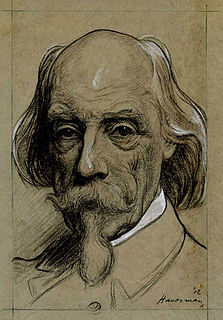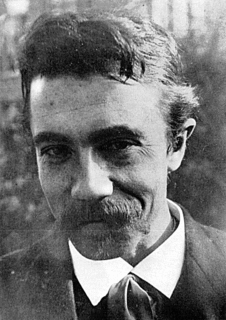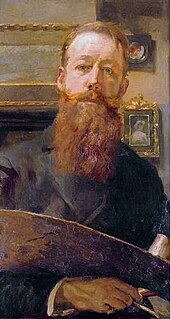This article needs additional citations for verification .(December 2021) |
![Willem Molkenboer, by
Jan Visser jr. [nl] (1906) Portret van W.B.G. Molkenboer W.B.G. MOLKENBOER - 1881 - 15 NOV - 1906 (titel op object), RP-P-1907-2045.jpg](http://upload.wikimedia.org/wikipedia/commons/thumb/1/11/Portret_van_W.B.G._Molkenboer_W.B.G._MOLKENBOER_-_1881_-_15_NOV_-_1906_%28titel_op_object%29%2C_RP-P-1907-2045.jpg/300px-Portret_van_W.B.G._Molkenboer_W.B.G._MOLKENBOER_-_1881_-_15_NOV_-_1906_%28titel_op_object%29%2C_RP-P-1907-2045.jpg)
Jan Visser jr. (1906)
Wilhelmus Bernardus Gerardus Molkenboer, known as Willem (8 June 1844, Leiden - 9 December 1915, Amsterdam) was a Dutch sculptor and art educator.
This article needs additional citations for verification .(December 2021) |
![Willem Molkenboer, by
Jan Visser jr. [nl] (1906) Portret van W.B.G. Molkenboer W.B.G. MOLKENBOER - 1881 - 15 NOV - 1906 (titel op object), RP-P-1907-2045.jpg](http://upload.wikimedia.org/wikipedia/commons/thumb/1/11/Portret_van_W.B.G._Molkenboer_W.B.G._MOLKENBOER_-_1881_-_15_NOV_-_1906_%28titel_op_object%29%2C_RP-P-1907-2045.jpg/300px-Portret_van_W.B.G._Molkenboer_W.B.G._MOLKENBOER_-_1881_-_15_NOV_-_1906_%28titel_op_object%29%2C_RP-P-1907-2045.jpg)
Wilhelmus Bernardus Gerardus Molkenboer, known as Willem (8 June 1844, Leiden - 9 December 1915, Amsterdam) was a Dutch sculptor and art educator.

He was born to Theodorus Molkenboer (1801-1872), a baker, and his wife, Euphemia née Halderiet (1804-1880). As their only son, it was originally intended that he should take over the family business. At the age of fourteen, however, he began a five-year apprenticeship in the workshops of the sculptor, Stephen Louis Veneman ;, a good friend of his father's cousin, an architect, who was also named Theodorus Molkenboer . During those years, he also attended night classes at the Royal Academy of Arts and Design.
In 1863, after completing his apprenticeship, he set out on the traditional "Wanderjahre". His first stop was Cologne, where he acquired some knowledge of woodworking. He then went to Munich, where he improved his skills for working with marble. From 1865 to 1867, he worked at studios in Antwerp and Leuven. In later years, he published humorous anecdotes about his experiences, under a pseudonym, in De Courant . He obtained a teaching certificate in 1868, and found employment as an art teacher at the Hogere Burgerschool in Leeuwarden.
During his time with Veneman, he had boarded with the family of Antonius Derkinderen, a silversmith. In 1870, he married Maria Cecilia Petronella Johanna Derkinderen (1848-1934) whose brother, Antoon, would later become an artist. They had fourteen children; three who died as toddlers, two who became artists (Theo and Antoon ), and one who became a designer (Phemia).
He spent thirteen years as a teacher in Leeuwarden, but continued to be active as a sculptor. In 1871, he was commissioned to create a bust of Prince Hendrik, on the occasion of his visit to the city. He set up a workshop in 1875, to make reliefs for building façades. After 1878, his attention slowly became more focused on art education, and he published some pamphlets on the subject. [1]
As a result, in 1880 he and the painter, Jan Striening , were assigned to study the methods of art education in Belgium. They were found to be superior. In response to the "België-rapport", the Dutch government began a national training program. The following year, he was transferred to Amsterdam, where he became Director of the Normaalschool for drawing education. In 1893, on the occasion of his twenty-fifth year as an art teacher, he was named an Officer in the Order of Orange-Nassau, by Queen Consort Emma. By 1900, there were sixty drawing schools, and he was in charge of the inspections.

The reforms eventually met with conservative opposition, and his supervisory role was reduced or eliminated at forty-seven schools. In 1906, he undertook another study trip, to Germany, to examine the reforms there. In 1908, similar studies were done in England, Scotland, Austria and Hungary. He came up with several proposals for reorganization, but none were even seriously discussed until 1917. He retained his post as Director at the Normaalschool until his death in 1915, and was not replaced immediately. The position would ultimately remain vacant for eight years.

The Rijksakademie van beeldende kunsten was founded in 1870 in Amsterdam. It is a classical academy, a place where philosophers, academics and artists meet to test and exchange ideas and knowledge. The school supports visual artists with a two-year curriculum.

Artus Quellinus the Elder, Artus Quellinus I or Artus (Arnoldus) Quellijn was a Flemish sculptor. He is regarded as the most important representative of the Baroque in sculpture in the Southern Netherlands. He worked for a long period in the Dutch Republic and operated large workshops both in Antwerp and Amsterdam. His work had a major influence on the development of sculpture in Northern Europe.

Jan Pieter Veth was a Dutch painter, poet, art critic and university lecturer. He is especially noted as a portrait painter. Amongst his sitters were Max Liebermann, Lambertus Zijl, Frank van der Goes, Antoon Derkinderen and other contemporaries including various fellow painters.

August Allebé was an artist and teacher from the Northern Netherlands. His early paintings were in a romantic style, but in his later work he was an exponent of realism and impressionism. He was a major initiator and promoter of Amsterdam Impressionism, the artist's association St. Lucas, and the movement of the Amsterdamse Joffers. Amsterdam Impressionism – sometimes referred to by art historians as the School of Allebé – was the counterflow to the very strong Hague School in the movement of Dutch Impressionism. As a professor at the Royal Academy of Amsterdam he fostered a cosmopolitan attitude toward art and the promotion and motivation of his students, and provided a significant stimulus to developments in modern art.

The Quellinusschool or Kunstnijverheidsschool Quellinus, was a school for sculptors in Amsterdam named after the Quellinus family of sculptors, founded in 1877.

Christoffel Bisschop was a Dutch painter and lithographer, known primarily for genre scenes and figures.
Theodorus Antonius Hubertus Maria (Theo) Dobbelman was a Dutch sculptor, ceramist and painter.
Teunis (Teun) Jacob was a Dutch wall painter and sculptor, who lived and worked in Rotterdam since the early 1950s. He made both figure and nonrepresentational art.

Hermanus Ellen (Herman) Mees was a Dutch artist, active as painter, watercolorist, draftsman, pastelist, lithographer, and academy lecturer. He was specialized in portrait painting.

Johann Eduard Karsen was a Dutch Post-impressionist painter, known for his moody scenes featuring villages and farmhouses; usually containing a solitary figure. He was associated with the literary movement known as the "Tachtigers".

Huibert Marie Luns was a Dutch painter, sculptor and writer. He also designed book covers, posters and medals.

Theodorus Henricus Antonius Adolph Molkenboer was a Dutch painter and designer; notably of book covers and posters. He was also an expert on the history of Dutch folk costumes and wrote several short works on that subject.

Johannes Hinderikus Egenberger, originally Joannes Henricus, was a Dutch painter, photographer and art educator.
Euphemia Hendrika Maria (Phemia) Molkenboer was a Dutch ceramist, furniture designer, draughtswoman and art teacher.
Molkenboer is a Dutch surname.

Adrianus Bonebakker was a Dutch goldsmith, silversmith and jeweller.

Antonius Johannes (Antoon) Derkinderen was a Dutch painter, Glass artist, Draftsman and designer of book covers.
Jacqueline Marguerite van Nie (1897-1983) was a Dutch artist.

Henriëtte Pessers (1899-1986) was a Dutch artist who painted in the Expressionist style.
Johanna Hendrika Pieneman (1889-1986) was a Dutch artist.
![]() Media related to Willem Molkenboer at Wikimedia Commons
Media related to Willem Molkenboer at Wikimedia Commons